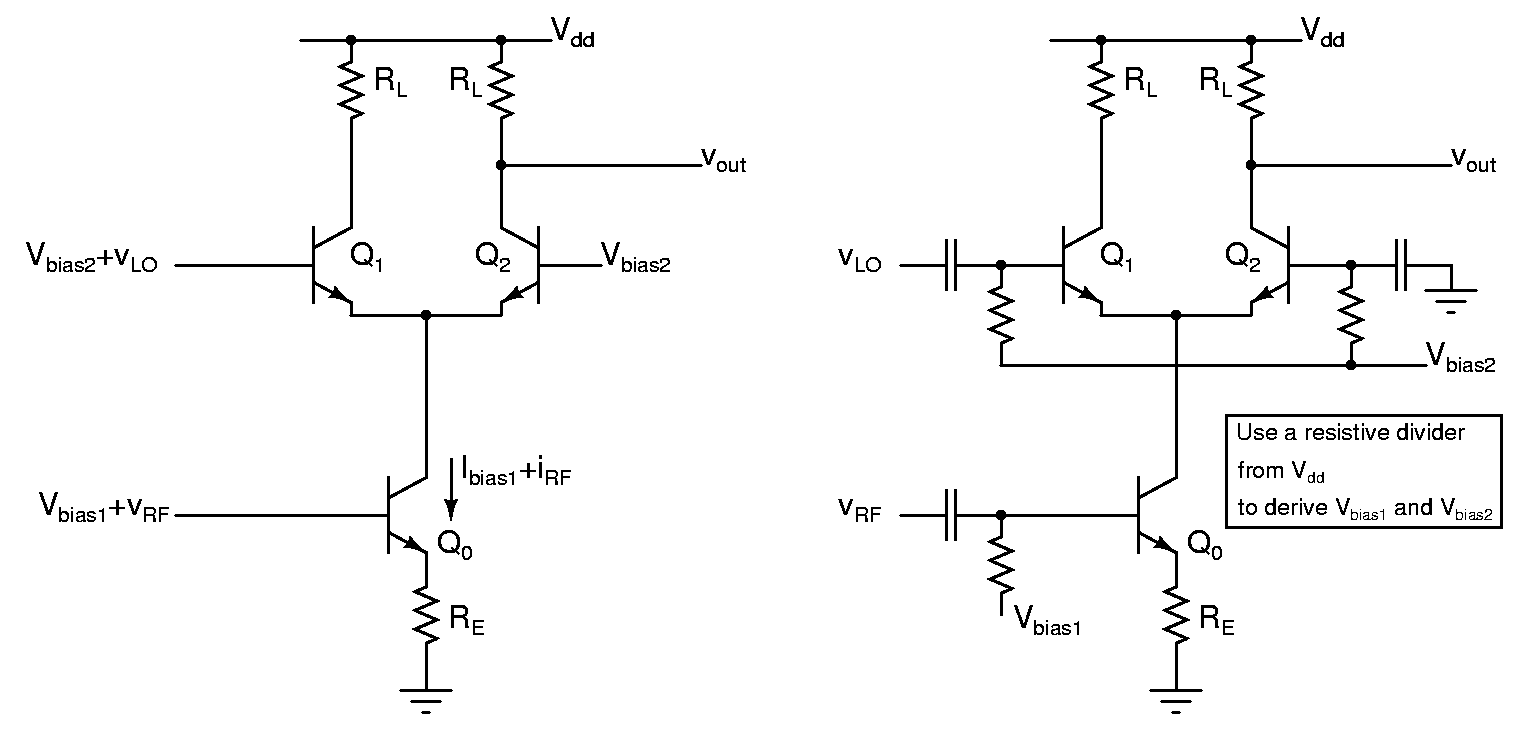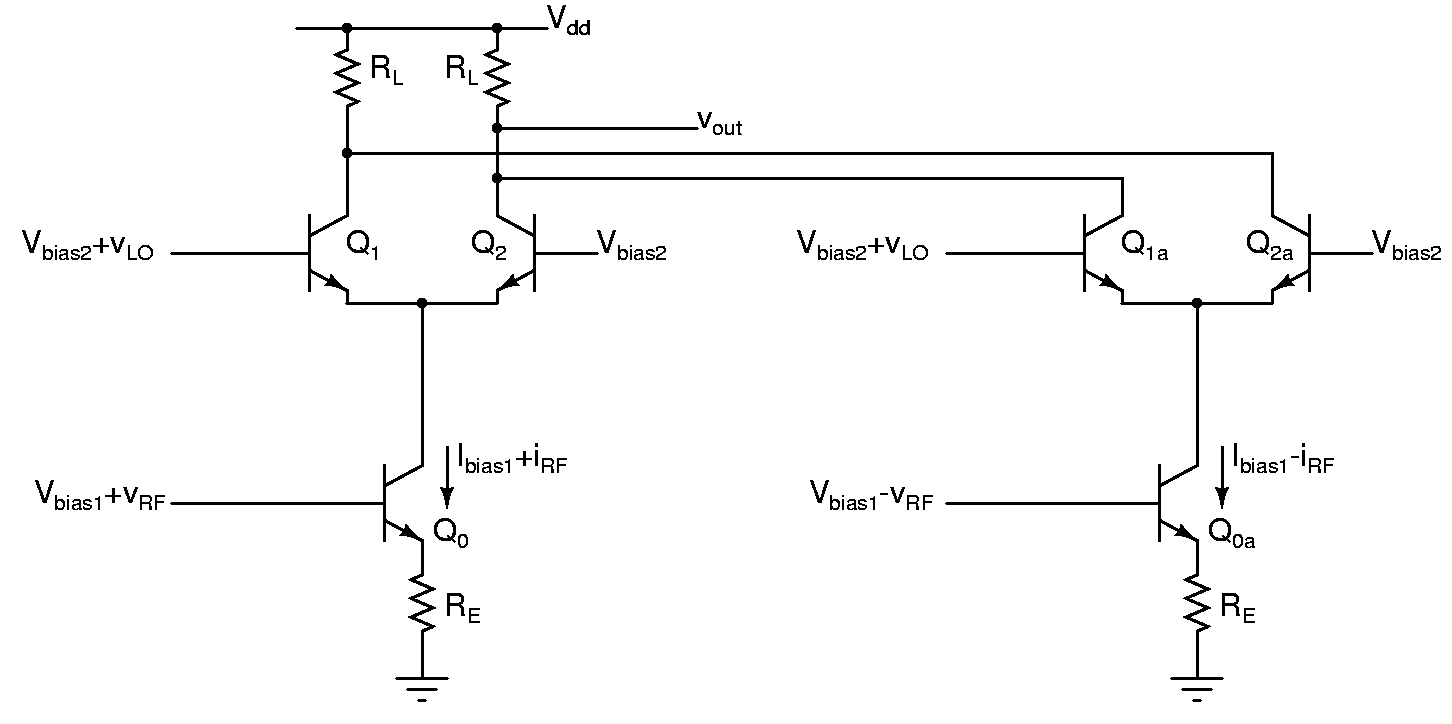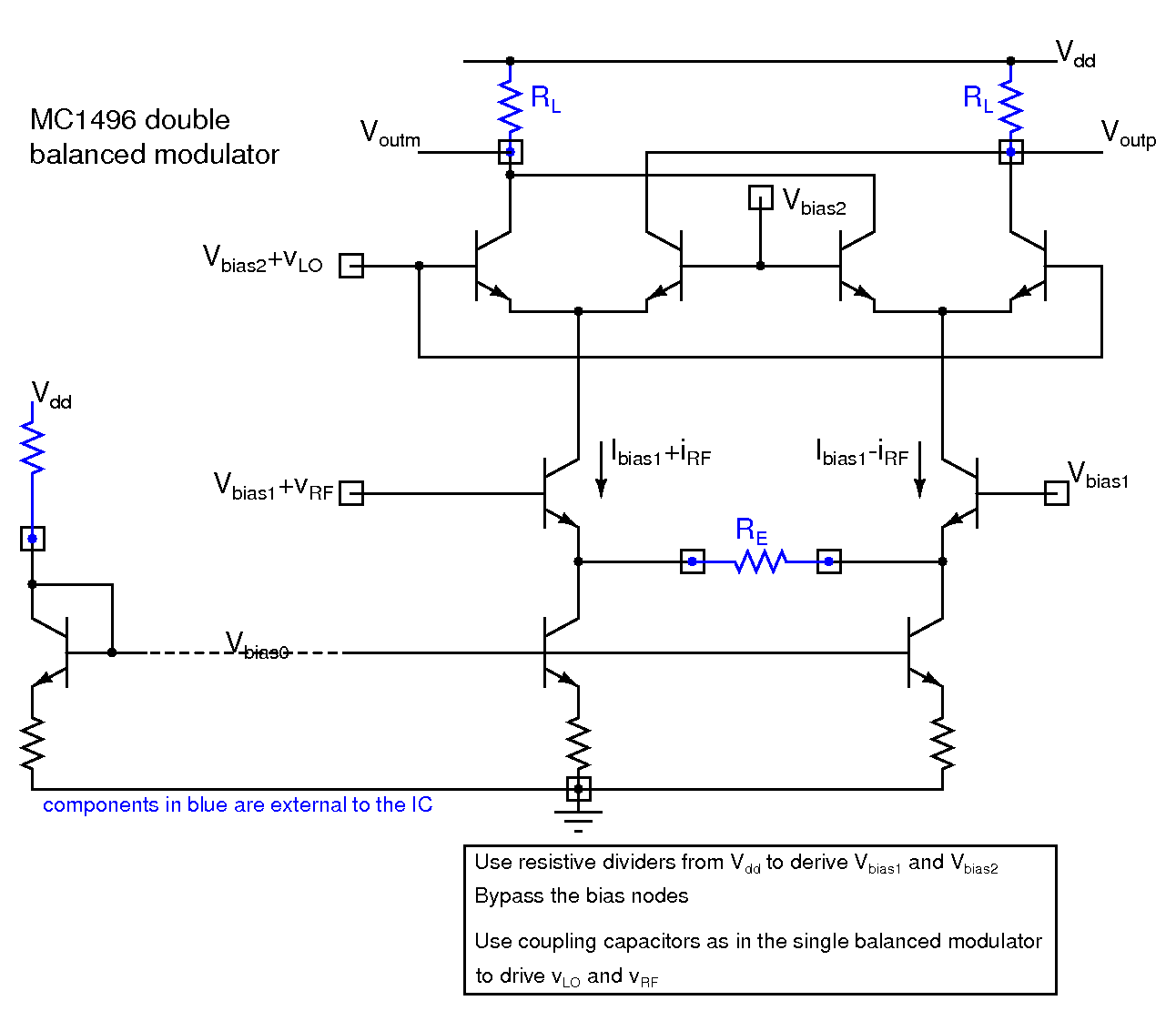Table of Contents
Mixer
A mixer is used for frequency conversion. For example, it is used in radio receivers to convert incoming signals at a high frequency to a lower intermediate frequency. And, in transmitters, it is used to convert low frequencies such as voice to high carrier frequencies.
The mathematical operation vout = k*vRF*vLO accomplishes frequency conversion. vRF and vLO respectively denote the input and the local oscillator signals. If vRF and vLO are sinusoids at fRF and fLO, vout will contain sinusoids at fRF+fLO and fRF-fLO. The desired component can be selected using a filter to attenuate one of them. (The terms vRF and vLO are carried over from radios where they stand for radio frequency input and local oscillator signal respectively)
For practical reasons, switching mixers are used instead of multipliers. These are described by vout = k*vRF*sgn(vLO) where sgn() denotes the signum function. sgn(vLO) where vLO is a sinusoid at fLO contains odd harmonics n*fLO, n=1,3,5,… In this case, if vRF is a sinusoid at fRF, vout will contain sinusoids at fRF+n*fLO and fRF-n*fLO, n=1,3,5,… As before, the desired component can be selected using a filter to attenuate one of them.
The above figure shows a mixer. The combination of Q0 and RE converts the input signal vRF to a signal current iRF riding on a bias current Ibias. The differential pair Q1,2 is driven by vLO which is a square wave or a sufficiently high amplitude sinusoid such that one of Q1,2 is completely on at a given time and the other is switched off. The current Ibias+iRF is steered to the two load resistors alternately. Consequently, the voltage at the collector will be a certain bias voltage plus k*(Ibias+iRF)*sgn(vLO).
In this mixer, if vRF=0(i.e. iRF=0), the output will contain a component proportional to sgn(vLO). This also needs to be filtered out if only the sum or difference frequency component is to be extracted. This is known as local oscillator(LO) feedthrough and is a characteristic of this type of mixers which are known as single balanced mixers.
LO feedthrough can be eliminated as shown in the circuit below by having two mixers driven by +vRF and -vRF and taking the difference between them. It can be seen by inspection that the sum of currents through Q1 and Q2a is always constant as is the sum of currents through Q2 and Q1a. This is a double balanced mixer.
The above circuit is available in the form of an IC-the MC1496 double balanced modulator. Its internal schematic is shown below. Most of the circuitry including the biasing arrangements are inside the IC. Only RE, the load resistors, and the bias current setting resistor need to be connected externally.
Experiments to be done
- Design a single balanced mixer using BC107 transistors. Use a 12V supply and about 1mA bias current. The mixer should be able to take in an input amplitude of 1V and have a conversion gain(ratio of fRF+fLO OR fRF-fLO component at the output to the input amplitude) of 2.
- Drive the input with a low frequency vRF(~ 1kHz) and a high frequency vLO(~20kHz) and observe the output.
- Drive the mixer with a vRF and vLO at close by, but not identical frequencies and observe the low frequency(fRF-fLO) output. For filtering out the high frequency component, use a capacitor of appropriate value across RL which will short it out at high frequencies.
- Remove the RF input and observe the LO feedthrough
- Design a double balanced mixer around the MC1496 IC. Use a 12V supply and 1mA current through the bias branch. The mixer should be able to take in an input amplitude of 1V and have a conversion gain(ratio of fRF+fLO OR fRF-fLO component at the output to the input amplitude) of 2.
- Repeat the experiments you did with the single balanced modulator.
Something you can try on your own
- Drive the lower input with audio, say from your computer or digital player. Drive the LO input with a sinusoid in the AM band(0.5-1.5MHz). You should be able to use an AM radio placed close by to receive the transmitted audio. You can use a short wire connected to the output node as an antenna.


